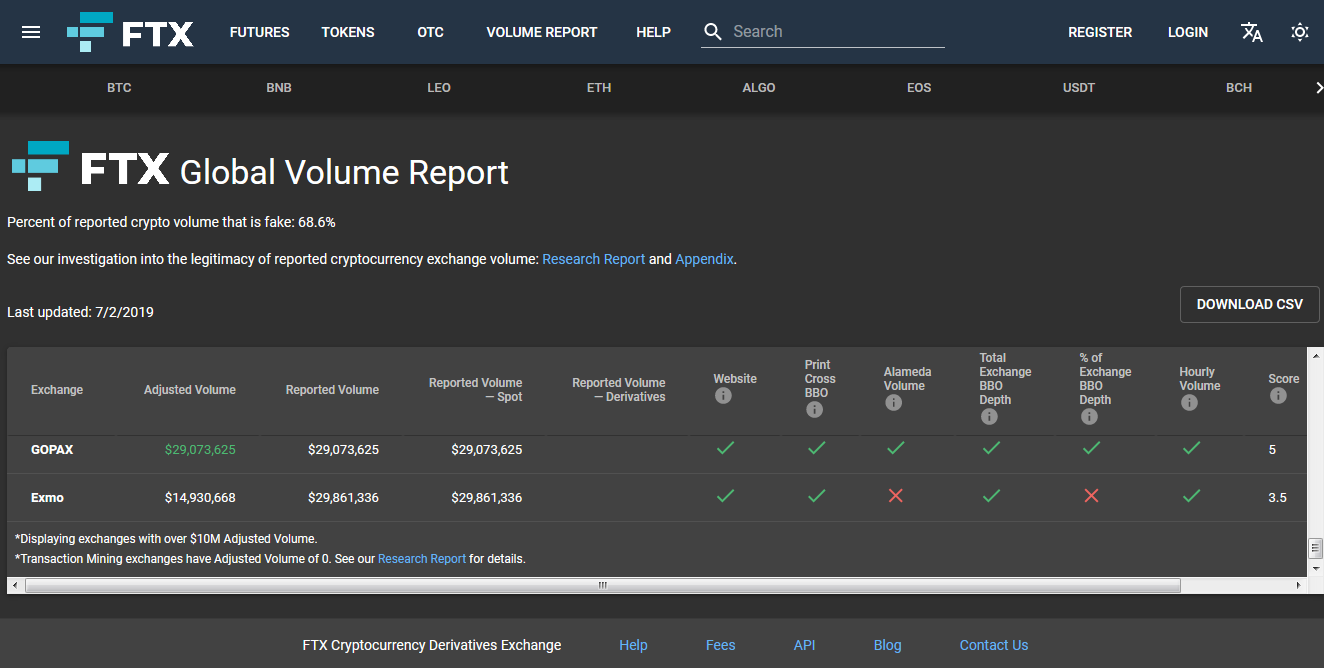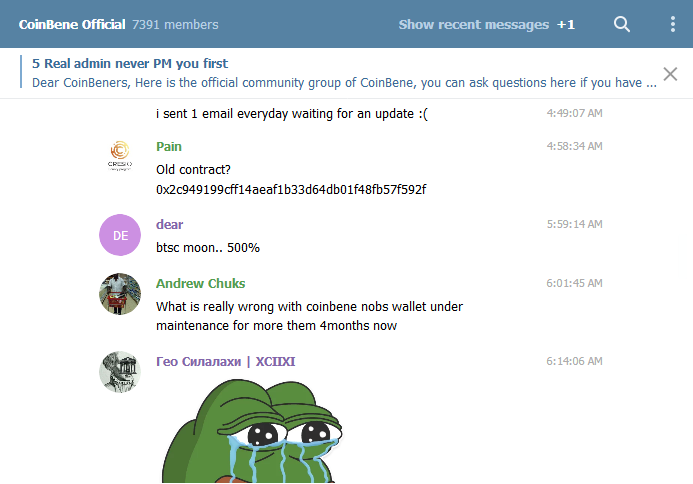Latest news about Bitcoin and all cryptocurrencies. Your daily crypto news habit.

FTX Global — a cryptocurrency trading firm, say they have uncovered the dirty tricks employed by certain crypto exchanges to inflate their trading volume.
68% of Cryptocurrency Trading Volume is Fake
In a blog post published on its official Medium account, FTX provided details about new research into crypto wash trading carried out in conjunction with Alameda Research — a liquidity provider.
According to the company, 68.6% of crypto trading volume on indexes like CoinMarketCap (CMC) are fake. The figures provided by Alameda’s research are significantly lower than the figures provided by Bitwise Asset Management, earlier in the year. The company explained the reason for this discrepancy stating that the studies conducted by Bitwise used parameters that over-filtered virtual currency trading volume, erroneously characterizing ‘real volumes’ as ‘fake.’
An excerpt from the full research report reads:
While our methods are not foolproof, we believe they paint the most accurate picture of the true nature of cryptocurrency trading volume that anyone has made publicly available as of yet.
Alameda’s methodology involved testing the legitimacy of the trading volume data attributed to various crypto exchanges against six parameters such as manual inspecting of trading data, comparison between order book depth and volume to mention a few.
How Crypto Exchanges Inflate their Trading Volume
According to Alameda, a manual inspection of trading volume for many exchanges showed clear evidence of wash trading. Elaborating further, the researchers revealed:
Some had many prints going up mid-market, much larger than any orders they had on their order books. Others were reporting other exchanges’ prints as their own, on a small time delay. Others did somewhat more sophisticated things, such as slipping in large fake prints only when they have a large number of smaller prints to hide them among.
And in other cases, they found
…many exchanges’ market pages display many trades which never appeared anywhere on their order books prior to the prints themselves occurring. Trades print significantly larger than any orders that exist on the order books, at prices squarely in 2 the middle of the order book both before and after the trades
For many of these trade volume ‘spoofers’, the main goal is to gain a higher rank on CMC so as to attract hefty listing fees from altcoin cryptocurrency projects. It also serves to lure new customers on to the platform, who think these exchanges have higher levels of liquidity than they actually do. The more customers on the platform, the more transaction fees the exchange profits from.
Take an exchange like CoinBene, for example. Alameda’s research identifies the platform as among those engaged in transaction mining to prop up its trading volume. Data from CMC shows the cryptocurrency exchange as the 6th-largest crypto exchange by trading volume — reporting $1.75 billion of trading volume over the last 24-hours. Yeah right.
Three months on from suffering a $100 million hack, the platform is yet to refund its customers. Complaints on the platform’s Telegram channel is met by the usual refrain of “wallet maintenance.”
The research paper went on to name and shame several more ‘major’ exchanges that were renowned for faking trading volumes,
…major exchanges which are known to engage in transaction mining are FCoin, Bitforex, Coinex, Coinbene, and Coinsuper
As part of the research, the Alameda team also provided a weighted score for 50 different cryptocurrency exchange platforms with a percentage pass or fail score attached to each based on a comparison of their volumes with those of reputable platforms.
Are you at all surprised by these latest findings? Let us know in the comments below.
Images via FTX Global Volume Report, Shutterstock
Disclaimer
The views and opinions expressed in this article are solely those of the authors and do not reflect the views of Bitcoin Insider. Every investment and trading move involves risk - this is especially true for cryptocurrencies given their volatility. We strongly advise our readers to conduct their own research when making a decision.

